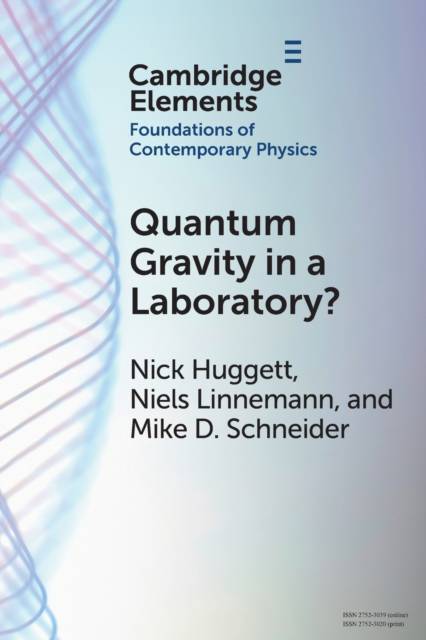
- Afhalen na 1 uur in een winkel met voorraad
- Gratis thuislevering in België vanaf € 30
- Ruim aanbod met 7 miljoen producten
- Afhalen na 1 uur in een winkel met voorraad
- Gratis thuislevering in België vanaf € 30
- Ruim aanbod met 7 miljoen producten
Zoeken
€ 33,45
+ 66 punten
Omschrijving
The characteristic - Planck - energy scale of quantum gravity makes experimental access to the relevant physics apparently impossible. Nevertheless, low energy experiments linking gravity and the quantum have been undertaken: the Page and Geilker quantum Cavendish experiment, and the Colella-Overhauser-Werner neutron interferometry experiment, for instance. However, neither probes states in which gravity remains in a coherent quantum superposition, unlike - it is claimed - recent proposals. In essence, if two initially unentangled subsystems interacting solely via gravity become entangled, then theorems of quantum mechanics show that gravity cannot be a classical subsystem. There are formidable challenges to such an experiment, but remarkably, tabletop technology into the gravity of very small bodies has advanced to the point that such an experiment might be feasible in the near future. This Element explains the proposal and what it aims to show, highlighting the important ways in which its interpretation is theory-laden.
Specificaties
Betrokkenen
- Auteur(s):
- Uitgeverij:
Inhoud
- Aantal bladzijden:
- 98
- Taal:
- Engels
- Reeks:
Eigenschappen
- Productcode (EAN):
- 9781009327534
- Verschijningsdatum:
- 3/08/2023
- Uitvoering:
- Paperback
- Formaat:
- Trade paperback (VS)
- Afmetingen:
- 152 mm x 229 mm
- Gewicht:
- 140 g

Alleen bij Standaard Boekhandel
+ 66 punten op je klantenkaart van Standaard Boekhandel
Beoordelingen
We publiceren alleen reviews die voldoen aan de voorwaarden voor reviews. Bekijk onze voorwaarden voor reviews.








